
Review on Quakehold! Clear 13-Ounce Museum Wax - Reusable & Removable, Non-Toxic & Non-Damaging Adhesive - Easy to Use for Wall Art, Antiques - Suitable for Metal, Glass, Ceramic, Wood - 1 Pack by Kristen Simpson

Comparing different company products
I'm compiling reviews of three related products from the same company because it would have helped me when making a purchase to be able to compare the pros and cons (and intended use) of each product. First, museum clay and quakehold clay are the same thing. This is in the leaflet that accompanies it. They have two different names just to sell them to different users. They also make Quakehold gel and museum wax. The gel requires a sealed surface and says it cannot be used on wood. It is transparent and if you need to attach a transparent vase to a glass shelf, this is your product. I also found it the hardest to work with so take that into account. It has a very slow slime (like very, very thick honey) and I just couldn't get it to stick to the crystal vase (fix it directly to the vase) - I had to put it on the shelf and put the vase on it. After I gave it time to "cure" (and scraped off the excess that leaked out) it held the vase really well and was practically invisible. Wax is what you need to glue something to a wooden surface. It is a soft white color (translucent in a thin layer) that is unnoticeable under most items. It's not hard like candle wax, it's soft and appears to have been liquefied and whipped (including air) and then cooled. I have no idea how they do it I'm just talking about how it is. The first few elements are relatively easy to handle, but when you make a lot it gets a bit annoying. The wax traces will stick to your fingers and stick to the wax you want to attach to the item. Wipe (scrub) your fingers with paper towels in between, but eventually you'll need to wash your hands in as hot water as you can stand. He goes. Putty is the easiest to work with. To me it's somewhere between cream and ivory and also understated under most things. You also need a sealed surface. While they say you can use it on finished wood, they also warn that it can lift the finish. Why take the risk? Use museum wax - wood has been waxed for centuries. However, I've used it on varnished wood and it doesn't seem to have harmed it. I bought all of these about three months ago and have used them on their respective surfaces. I could live without the gel (just don't need it in my conditions) - I just found a place for it, but it's holding up well. On the other hand, wax and putty are two things I wish I had found many years ago! I have a litter of teenage cats who practically bounce off walls when they play and chase each other. Since I've used these things on almost anything that can be broken within their reach, they haven't managed to knock a single thing over! Vases/candle holders/picture frames/bells/etc. on tables, glass bottles on the windowsill, Glass and ceramic storage containers on kitchen countertops, an external hard drive on the table, even a chunky headphone charging stand. (Once you start you'll keep finding new uses.) A suggestion that differs slightly from the instructions, especially for materials with rounded edges - instead of making little balls of the material, make little worms. You still spread it around the item (not at the bottom and not around the perimeter), but that makes it easier to manage and reduces the chance of leakage. Also, a small amount is enough. I used about a third of a can of wax and a little over three quarters of a pack of putty. I already have a spare of putty - I will never be without a spare of both again! Hope that helps! make little worms. You still spread it around the item (not at the bottom and not around the perimeter), but that makes it easier to manage and reduces the chance of leakage. Also, a small amount is enough. I used about a third of a can of wax and a little over three quarters of a pack of putty. I already have a spare of putty - I will never be without a spare of both again! Hope that helps! make little worms. You still spread it around the item (not at the bottom and not around the perimeter), but that makes it easier to manage and reduces the chance of leakage. Also, a small amount is enough. I used about a third of a can of wax and a little over three quarters of a pack of putty. I already have a spare of putty - I will never be without a spare of both again! Hope that helps!
- Lots of positive vibes
- No efficiency
New products
Comments (0)
Top products in 🕯️ Wax Molding Materials
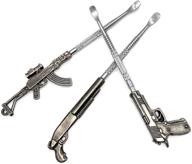
Kiwini 1 3Pcs Carving Tool

3 Review
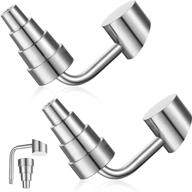
🔌 Titanium 6 in 1 90° Connector Set: 10mm, 14mm, 18mm Male and Female Accessories with Temperature Controller

4 Review
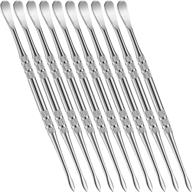
🔥 10-Pack Stainless Steel Wax Carving Tools - Spoon Style, 4.75 Inch, Silver

3 Review

🐡 Ceramic Delight: Globefish Accessories Set - 3PCS!

3 Review
Another interesting products

420 PCS Mini Natural Chip Stone Beads 3-5Mm - 7 Chakras Gemstones Healing Crystal Loose Rocks For DIY Bracelet Jewelry Making Crafting

32 Review
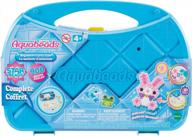
Aquabeads Beginner Arts & Crafts Bead Kit For Kids - 900+ Pieces Carry Case Set

26 Review
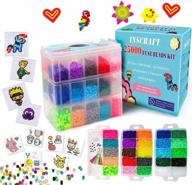
25,000 Pcs Fuse Beads Kit By INSCRAFT - 26 Colors 5MM Including 127 Patterns & 4 Pegboards + Ironing Paper & Tweezers

37 Review
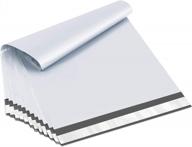
UCGOU White Poly Mailers 9X12 Inch Pack Of 200 - #3 Strong Shipping Bags For Boutique Packaging, Small Business, Books, And Clothes - Waterproof, Tear Proof, Self-Seal Adhesive Postal Envelopes

35 Review

